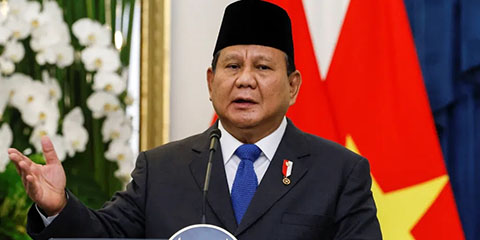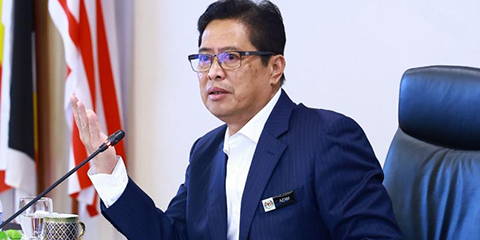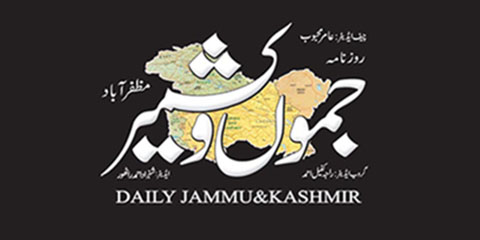JournalismPakistan.com | Published July 16, 2024 at 01:14 pm | Sarah Johnson
Join our WhatsApp channel
BANGKOK-The major international media networks are expanding in Asia, completely changing the face of global media. It is driven strategically by the growing Asian middle class, increasing penetration of the Internet, and a burgeoning demand for a wider assortment of diverse content.
One of the biggest triggers to this growth is the rapidly growing Asian middle class. More disposable income implies increased demand for standard forms of entertainment. Additionally, internet penetration has risen to the sky, and more people now have access to digital content. A recently released report indicates that in the past 10 years, over 50 percent of global internet user growth originated from Asia.
Opportunities
Asia serves the market of unlimited opportunities for media companies internationally, with vast potential. With its diverse cultures and a wide array of different languages across the continent, there is virtually an opportunity for any creation and distribution in content. From movies to television series, and not forgetting even news and sports, the potentials are there. Besides, collaboration locally and partnerships between local Asian media companies could provide better entrance into this dynamic market.
Challenges
Huge opportunities are surfacing, but one should never err in assuming that entering the Asian market for media is a bed of roses. The key obstacles can be understood as the following: regulatory hurdles, cultural differences, and intense competition from established local media players. Each country in Asia has its own set of media regulations, which can be so complex that companies have to spend a considerable amount of time just understanding and being compliant.
Case Studies
To be sure, there are many international media networks that have arrived in Asia and are making huge headways. For example, Netflix has already gained a significant market share by providing localized content, such as the very popular series from South Korea called 'Kingdom'. Disney, on the other hand, after launching its streaming service, Disney+, has also been launched in multiple Asian countries with a combination of global and locally-produced content.
Future Outlook
The future of international media in Asia is bright. With rapid technological developments and the ever-increasing appetite for diverse content, the region stands on the threshold of becoming a meaningful center for global media networks. The landscape of entertainment in Asia will further intensify as more and more investment pours into local content production and strategic partnerships.
In sum, the spread of international media networks into Asia is a portent of new growth that the global media has in store. Challenging though it may be to surmount, in many ways, it carries an equal and opposing magnitude of opportunity for expansion and innovation. If the region progresses in its economy and technology, it will likely make a difference in the future of global entertainment.
About the author: Sarah Johnson reports on trends in international business and media and is known for her deep analytic skills and engrossing writing.

April 01, 2025: Photojournalist Suresh Rajak was burned alive while covering a violent protest in Kathmandu. The IFJ and its affiliates condemn the attack and call for an urgent investigation to hold the perpetrators accountable.

April 01, 2025: Assam Police arrested digital journalist Dilwar Hussain Mozumder for covering a protest against alleged corruption at Assam Co-Operative Bank. Media organizations have condemned the arrest, calling it an attack on press freedom.

March 27, 2025: Several journalists were attacked and forced to delete footage while covering anti-military protests in Indonesia. CPJ urges authorities to hold the perpetrators accountable.

March 23, 2025: The severed pig’s head sent to Indonesia’s leading news outlet, Tempo, signals escalating media intimidation amid President Prabowo Subianto’s attacks on foreign-funded media.

March 14, 2025: The Committee to Protect Journalists (CPJ) urges Maharashtra authorities to ensure their AI-driven media monitoring plan does not undermine press freedom. The initiative, which classifies news as positive or negative, raises concerns over government overreach and self-censorship.

March 11, 2025: Indian journalist and RTI activist Raghvendra Bajpai was shot dead in Uttar Pradesh on March 8 in a targeted attack. Media organizations, including IFJ, NUJ-I, and IJU, demand justice and an urgent investigation into his murder.

March 06, 2025: The arrest of Malaysiakini journalist B. Nantha Kumar by the Malaysian Anti-Corruption Commission has raised concerns over press freedom. The IFJ and NUJM call for a transparent investigation amid allegations of bribery and ongoing state harassment of independent media.

February 28, 2025: The Dewan Rakyat passed the Malaysian Media Council Bill on February 26, marking a historic step toward independent media regulation. Supported by journalists, unions, and media bodies, the council aims to set ethical standards, improve working conditions, and reform restrictive laws. The NUJM and IFJ celebrate this milestone while urging independence and adequate resourcing for the council.

April 11, 2025 Sindhi journalist AD Shar was brutally murdered in Khairpur, Sindh. His body was found dumped on Handiyari Link Road. PFUJ has declared a three-day mourning period and demanded justice.

April 10, 2025 The Azad Jammu and Kashmir government has filed a case against The Daily Jammu & Kashmir and its staff for alleged fake news, drawing condemnation from PFUJ and IFJ, who demand immediate withdrawal of the FIR and an end to media repression in Pakistan.

April 08, 2025 Journalist Arzoo Kazmi alleges that Pakistan's state agencies, including the FIA, have blocked her CNIC, passport, and bank account while threatening her. She calls it a direct attack on journalism.

April 07, 2025 The Islamabad High Court has directed IG Islamabad to produce journalist Ahmad Noorani’s missing brothers, as the Ministry of Defence denies custody. SIM activity was traced in Bahawalpur, and investigations into their suspected abduction continue.

April 07, 2025 Journalist and Raftar founder Farhan Mallick has been granted bail by a Karachi court in a case concerning anti-state content aired on his YouTube channel. He still faces separate charges related to an alleged illegal call center and data theft.